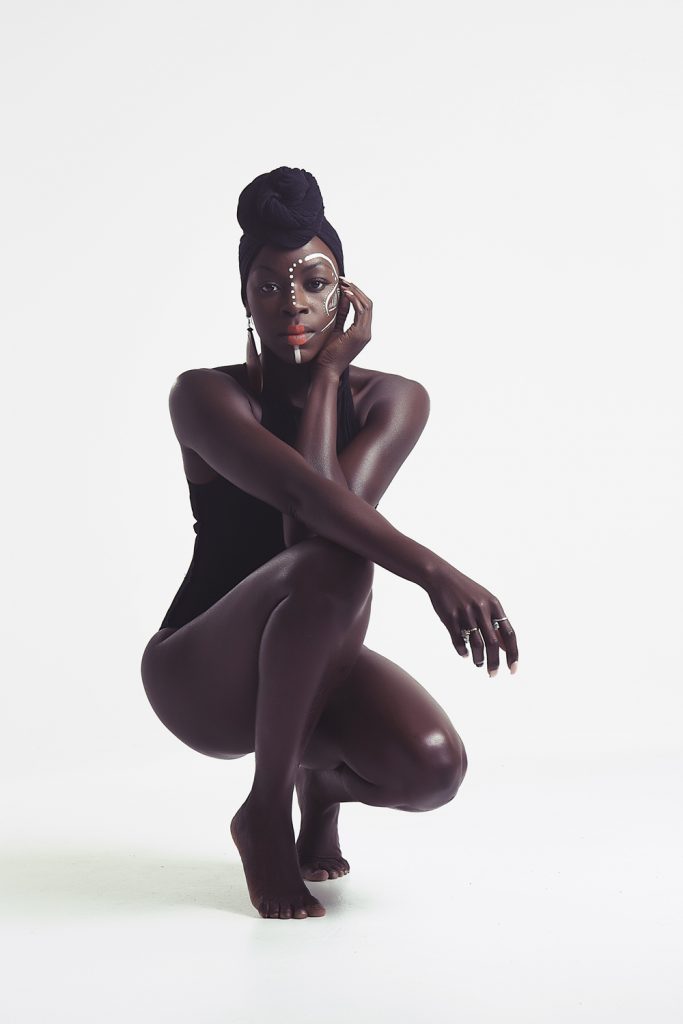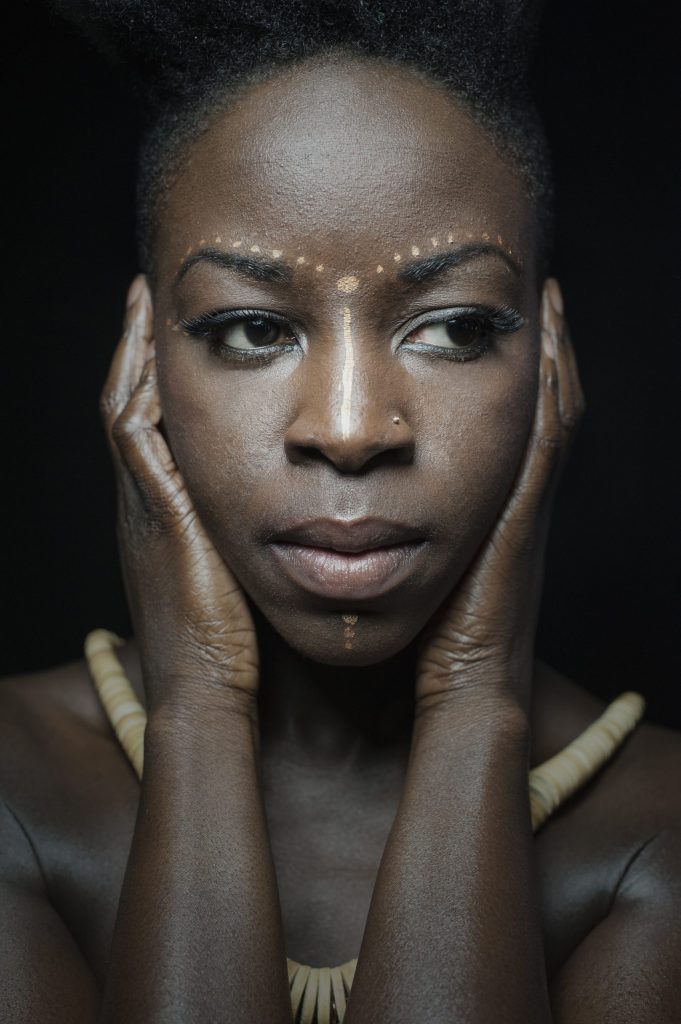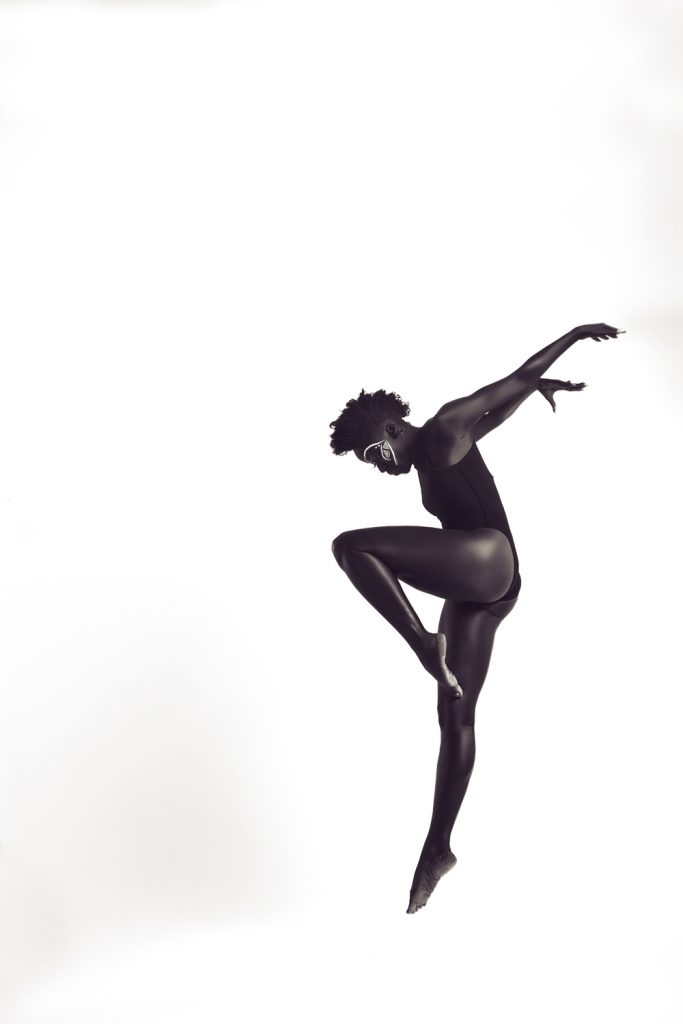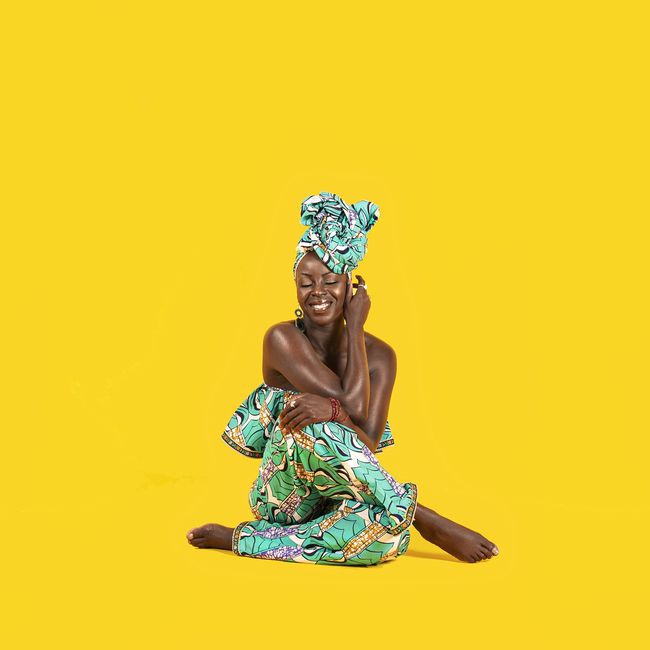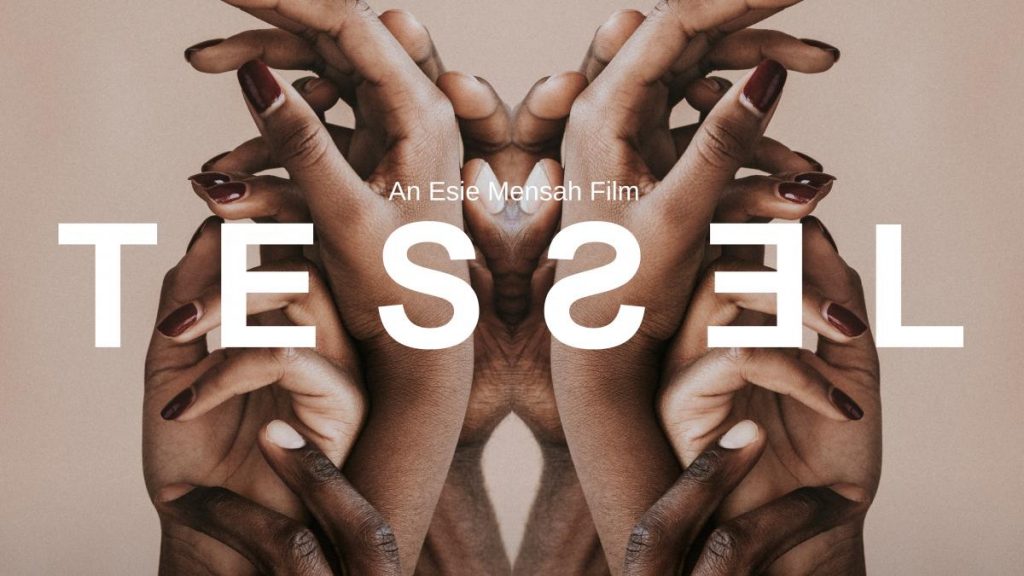Photo byMikka Gia
Photo by Felix Russell-Saw, Design by Tony Tran
JAMES STRECKER: Please tell us about one or more projects that you have been working on or have recently completed. Why exactly do they matter to you and why should they matter to others?
ESIE MENSAH: I am releasing my second film within the pandemic called TESSEL, which amplifies the voices and bodies of 14 Black dancemakers that come together in conversation of what change looks like today. Due to the pandemic, the myriad of deaths that occurred in North America and the micro and macro encounters with racism unveiled a truth that many have been struggling to deal with. They occur on an insidious level that breaks down the spirit like 1,000 paper cuts. As a Black woman, I’ve had my fair share of micro and macro aggressions throughout my life and career. However, after last year I knew I needed a space to talk, so when I got the call from Ilter Ibrahimof (Artistic Director of Fall for Dance North), I instantly knew I wanted to give space for conversation so I could amplify these voices and not just their bodies. I knew that in order to break the pattern we all needed space to lean into our vulnerability so our words can be heard and felt by the community.
JS: How did doing these projects change you as a person and as a creator?
EM: It reminded me how much I needed to believe in myself. This project was a tall order. I asked a lot of myself with this project from conception to facilitation, to writing and directing. I recognized only during the project the amount of work that was required of me. The amount of times I felt like I needed to come up for air because I was too deep under the water, became great life lessons. Learning to pace myself. Not drowning myself in work and taking care of myself. Listening deep to the voice within me to guide me through and I made my way to the other side. I am grateful. Now I get to enjoy riding the wave.
JS: What might others not understand or appreciate about the work you produce or do?
EM: The source of my ideas come as a powerful burst of energy. It feels very clear and concise. Then I spend the remaining time trying to understand why the idea came and how to manifest it. Why did this idea choose me? Why now? Why is this important? What do I need to learn from this journey? My creations serve me and my community and I learn just as much, if not more, from what I create.
JS: What are the most important parts of yourself that you put into your work?
EM: My Spirit. I bring all of myself into my art. I continue to challenge myself to invest more than just the steps or just an idea. I feel that is what makes my work so unique. I’m extremely intentional but I do love some happy accidents—the things you didn’t know would end up the way they did when you were working. The syncing of ideas in a beautiful cosmic way.
JS: What are your biggest challenges as a creative person?
EM: Doing the work! It’s tiring, it’s taxing but it’s also very rewarding! Moving through the ebb and flow of manifesting the idea can take a lot out of you. We don’t discuss enough how the work can affect the person but it can have a major impact on you personally and emotionally. Finding a balance to step away is necessary and important if you want to create good art.
JS: Imagine that you are meeting two or three people, living or dead, whom you admire because of their work in your form of artistic expression. What would you say to them and what would they say to you?
EM: Maya Angelou is someone I would love to sit down with. She has had such an extraordinary life and used her most traumatic events as her superpower. I would ask Dr. Angelou what she feels we need at this point in time to help us move forward in this ever-changing world. I feel she would take my hand and tell me that everything we need is inside of us. To look deep within and that the answers are all inside of us waiting to come out.
I would also love to speak with author Paulo Coelho about creating The Alchemist. That book felt like a download from God. A message to the people of Earth. I would want to ask him what the process was like creating the book and how it feels to create something with such impact on people’s lives. That book felt like it was created for every individual who reads it. A story of self-discovery, trust and, most of all, faith. I feel he would say that it’s important to maintain a connection to the soul of the world in order for it to receive what it needs to move forward. To not lose sight of what is meant for us.
JS: Please describe at least one major turning point in your life that helped to make you who you are as a creative artist.
EM: One major turning point in my life was not allowing my shade to dictate my future. I dealt with a lot of uncertainty and closed doors throughout my career that often made me feel pigeon holed. It restricted me but it didn’t stop me from finding new ways to see myself. That restriction was my breaking point. I said to myself I have to be so good they can’t deny me. I have to be so amazing, extraordinary, undeniable that my shade will never be an issue. My dark skin became my superpower and that empowered me to walk the path that I am on today.
JS: What are the hardest things for an outsider to understand about your life as a person in the arts?
EM: As a dancer, we are often placed on the bottom of the spectrum of society’s ideas of elite art. People often look down on dancers, whether they are aware of it or not. Helping the general public to see the opportunity and impact that dance can bring is integral to its growth. Dance was one of the first forms of expression amongst racialized communities. We danced to celebrate, mourn, and everything in between. Movement has always been a part of us and reminding people how important it is can truly give those around a different point of view and experience.
JS: Please tell us what you haven’t attempted yet that you would like to do in the arts? Why the delay so far?
EM: It would be amazing to create a feature film or Broadway show. I have many more ideas but I’ll keep those ones close to me.
JS: If you could relive your life in the arts, how would you change it and why?
EM: I think if I could relive a moment then I think I would go back at different times in my career and cherish the memories more. There is not much to take home after a dance performance (the video will never do it justice). The chance to hold onto these experiences a little longer would be amazing.
JS: Let’s talk about the state of the arts in today’s society, including the forms in which you work. What specifically gives you hope and what specifically do you find depressing?
EM: What gives me hope is that people are waking up to the beauty of dance. I always tend to find that within the arts industry, dance tends to be on the lower end of the spectrum. I feel we don’t receive the same level of notoriety as visual arts or theatre. I’ve been feeling this increase on the horizon and I think it’s very promising to witness. For genres outside of ballet, I do feel the public is getting accustomed to discerning different types of dance as an elite artform.
What I find depressing is that funding for dance is still rather low. Dancers are still being paid a couple hundred (even if that) to perform for shows, music videos, and productions. Anything to help support an artist’s vision. This is highly problematic and has been for a long time. However, as a producer myself I do understand that you are stuck between a rock and a hard place because of funding issues. Do you fulfill the project with less funding or do you cancel? It’s important to fulfill your vision and I think many artists can relate to this struggle. I’ve never been certain of the solution as I understand both sides but I hope there is some common ground that we can get to.
JS: What exactly do you like about the work you create and/or do?
EM: I enjoy seeing my ideas transform into reality. It’s exciting to feel an idea download into my spirit and then see how it begins to manifest. It’s quite humbling to go through the growing process and pains of an idea. It is an uncomfortable growth period but I find it yields the best results.
JS: In your creative life thus far, what have been the most helpful comments you have heard about your work?
EM: I’ve heard from audiences how visceral and impactful my life has been. That has changed peoples’ point of view of the world that surrounds them. I never knew that creating art could truly have that impact. Once I understood that impact, I recognized I had a greater responsibility to myself and my community. So, I am grateful people respond to my art as they do.
JS: Finally, what do you yourself find to be the most intriguing and/or surprising things about you?
EM: I love me some cartoons! Pixar movies are my best friends.

